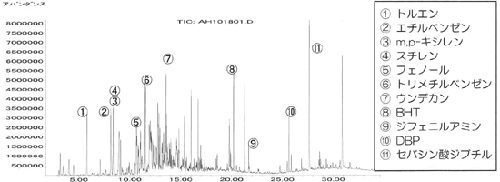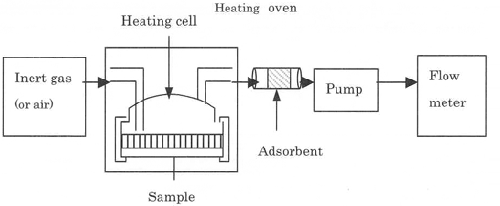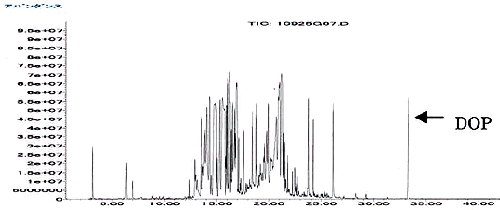The importance of evaluating air inside vehicles has been coming under increased scrutiny in recent years. This page introduces some examples of evaluating vehicle interior air and evaluating materials.
Regulation / Revision
Vehicle interior air evaluation positioning
From the perspective of sanitation and public hygiene, it is necessary to reduce contaminants, no matter where they are. As shown below, these must be applied in a range of indoor spaces.
- Dwellings
- Offices
- Hospitals and medical institutions
- Schools and educational institution
- Libraries
- Theaters and movie theaters
- Inside vehicles, etc.
Ministry of Health, Labour and Welfare, September 25, 2000
The Ministry of the Environment has also categorized taxi drivers and other drivers of public transportation as belonging to the “high exposure group” for environmental hormones (such as phthalates). The Ministry is requiring evaluation of the total time of exposure to chemical substances—including time at home, during commutes, and at work.
Notice for Evaluation of Chemical Substances in Vehicle Interior Air
Vehicle interiors contain different constituent materials from general residences and offices. Vehicle interiors also become extremely hot—especially in the summer. When evaluating vehicle interiors, it is therefore to conduct evaluations that are reliable even under high temperatures, because detected compounds differ from those in general residences and offices, and the amount detected also differs. Sumika Chemical Analysis Service quickly overcomes these issues and conducts evaluations.
Evaluation Examples of Chemical Substances in Vehicle Interior Air
- Subject: Domestic vehicle A (delivered on Oct. 1, 2002)
- Sampling performed to evaluate driver exposure under blazing sun from 1:00 pm to 2:00 pm
- Temperature inside vehicle was around 44℃
 Example of vehicle interior air chemical substance evaluation
Example of vehicle interior air chemical substance evaluationCharacteristics of chemical substances detected in vehicle interior air
- A high concentration of additives (such as resin antioxidant and plasticizer) was detected
- Compounds not often found in general residences (such as phenol and diphenylamine) were detected
Evaluation Methods of Chemical Substances Emitted from Vehicle Interior Materials
Chemical substances found in the air inside vehicles come from parts exposed to the vehicle interior, such as the seats, panels, and audio equipment. There are two major ways to evaluate these materials.
Methods for evaluating chemical substances produced from interior materials
Dynamic headspace method
Material is first placed inside a chamber. Conditions such as the temperature, humidity, and ventilation ratio inside the chamber are then controlled in order to collect compounds produced from materials that become attached to a certain adsorptive agent. The temperature-acceleration method and construction material JIS A1901 small chamber method fall under this category.
This method determines the amount emitted over one hour (emission amount [μg/m²・h]) for the surface area of the material or at the individual specimen level, making it possible to estimate the rate of contribution to the indoor space. The acceleration test method can be used to conduct evaluations as the inside of the vehicle becomes hotter.
Static headspace method
An airtight container is filled with the material and gas, and then heated to release compounds. The gas phase is collected either directly or using an adsorptive agent, and then measured. Methods that use a Tedlar bag or headspace bottle fall under this category. Although this method does not give the emission amount, it can be used for primary screening to determine if the concentration is high or low.
 Heating/acceleration test system process
Heating/acceleration test system process  Example of measuring materials using the heating/acceleration test method
Example of measuring materials using the heating/acceleration test method - The heating/acceleration test method is also capable of evaluating plasticizers detected in high concentrations in hot vehicles.
- Plasticizers can not be evaluated by the room temperature test method such as the small chamber method.
Technical News
Contact Us for Services
For inquiries and requests concerning services of analysis, measurements, products and consulting, please contact us via inquiry form.
